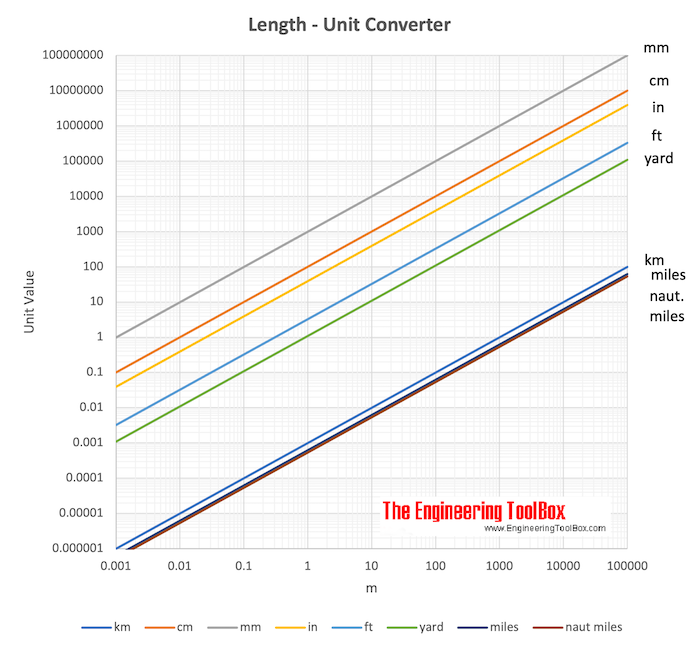Some Known Factual Statements About Inches To Centimenter
Our Inches To Centimenter Ideas
Table of ContentsInches To Centimenter Fundamentals ExplainedWhat Does Inches To Centimenter Mean?Rumored Buzz on Inches To CentimenterHow Inches To Centimenter can Save You Time, Stress, and Money.Getting The Inches To Centimenter To Work
This procedure for figuring out the needed conversion aspect corresponds precisely to Jeremy's hands-on approach: "To identify an unit conversion element, established the criterion worth to 1 in the interface, then determine the value returned by the API; this will certainly provide you the specific conversion aspect in between the 2." Even more, we can actually have Revit transform that value to a really various collection of units of measure.0 CFM to cubic meters per hr, which, as we can see near the bottom of the type, corresponds to 1. 699010795520. That conversion is done utilizing the As, Worth, String strategy. If you explore the sample code you will most likely obtain some even more understandings into just how Revit jobs with parameters and systems of procedure.
To convert in between units, you're normally provided one measure as well as asked to transform to one more step. For instance, you'll be offered some quantity in "gallons" as well as be asked to transform the volume to "fluid ounces". They will certainly have given you (or else you can easily discover) the conversion units that appropriate to the job.
To convert from one device to an additional, below's the actually simple guideline: mosting likely to smaller sized systems meansgoing to larger numbers, so multiply going to bigger devices meansgoing to smaller sized numbers, so separate Quarts are smaller than gallons; every gallon has 4 quarts. Since I'm transforming from a bigger device (gallons) to a smaller sized system (quarts), my answer needs to be a bigger number.
The smart Trick of Inches To Centimenter That Nobody is Talking About
Because I'm transforming from a smaller sized unit (lawns) to a bigger system (miles), my response needs to be a smaller sized number.!! The above are examples of one-step conversions between systems of the same type; specifically, Imperial units.

Keep in mind: I'm not talking right here regarding numbers "counteracting", like when you're multiplying portions. Instead, I'm discussing dealing with the systems (" feet", "cubic centimeters", "secs", and so on) as though they were numbers, and also cancelling why not look here them. inches to centimenter. Among these dimensions remains in terms of "miles per hour" and the various other is in regards to "meters per second".
These aspects give connections, one way or another, in between "secs" as well as "hrs" and between "miles" as well as "meters", so they'll get the job done. To compare these two prices of speed, I need them to be in the exact same systems. Flipping a coin, I determine that I'll transform the "80 miles per hour" to "meters per 2nd".
All About Inches To Centimenter
I desire "hours" to terminate off (for "seconds", at some point), so the conversion variable for hrs as well as mins needed to have "hrs" on top. That indicated that "60 minutes" had to be underneath. Which determined the positioning of the following element: Because "60 minutes" was below and since I would certainly need "mins" to terminate at some point, after that the "1 min" (from the conversion variable for minutes and secs) had to get dig this on top.
And considering that I'm desiring a last solution of "per secs", I desire the secs beneath, so this works out just. Similarly, what they offered me has "miles" on the top so, in the "1 mile to 5280 feet" conversion factor, I require the "miles" on the base, so it cancels off.
In the "1 foot to 12 inches" conversion element, I'll need the "foot" on the base; this will place the "inches" on top. The last conversion variable is "100 centimeters to 1 meter"; considering that "centimeters" in the previous variable were on top, then I'll need "centimeters" on the base, leaving the "meters" on top.
Forty is more than thirty-six, so: 40 meters per secondly is quicker than 80 miles this website per hour. Affiliate This method of converting devices can actually be fairly valuable: it obtained me through a chemistry class! I didn't have a hint what the trainer was speaking about, however on the test concerns he offered only the specific info required, and also if I established everything so the devices cancelled, I constantly obtained the appropriate response.
Inches To Centimenter Can Be Fun For Everyone
Cancelling units (also called "system analysis" or "dimensional analysis") is based on the principal that multiplying something by "1" doesn't change the value, that any kind of worth separated by the exact same value equates to "1", which (for the functions of converting in between systems) a conversion variable (shared as a fraction, as shown over) is watched as having a worth of "1".
Many of our users have actually composed to us to inform us that Uconeer is the ideal engineering unit conversion calculator they have actually ever before utilized. Uconeer was designed for engineering, technical and also clinical users who require frequent, exact, dependable and also constant conversions of the useful devices as well as dimensions that they use on a day-to-day basis.
If you are this sort of individual then we are certain that Uconeer will be the very best for you.

The Definitive Guide for Inches To Centimenter
That is why we need a device converter to help is in computations - inches to centimenter. An unit is the action of quantity to provide value to matter.